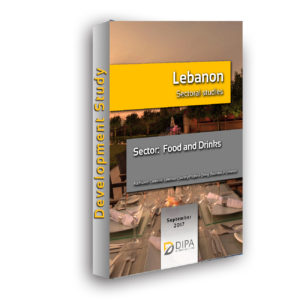 Lebanon is one of the smallest countries in the region, but strategically located on the Eastern Mediterranean, it is an important commercial hub for the Middle East. A heterogeneous country, highly divided along both religious and confessional lines, Lebanon has a relatively young population. The Lebanese system of government reflects a combination of the prime ministerial and presidential systems. A lengthy power vacuum was recently filled with the appointment of Michel Aoun as President and Saad Hariri as Prime Minister.
Lebanon is one of the smallest countries in the region, but strategically located on the Eastern Mediterranean, it is an important commercial hub for the Middle East. A heterogeneous country, highly divided along both religious and confessional lines, Lebanon has a relatively young population. The Lebanese system of government reflects a combination of the prime ministerial and presidential systems. A lengthy power vacuum was recently filled with the appointment of Michel Aoun as President and Saad Hariri as Prime Minister.
The business environment in Lebanon is relatively restrictive, with the World Bank ranking it 126 out of the 189 countries surveyed in its Doing Business 2017. In terms of Global Competitiveness, the World Economic Forum ranks Lebanon as the 101st most competitive nation in the world (out of 138 economies).
The Lebanese food and drinks industry has thrived in recent years, in spite of an overall rough economic climate. Food consumption in Lebanon has been growing steadily, and in 2015 it increased by 4.3%. The most dynamic of the sub-sectors in the drinks segment in Lebanon is the soft drinks industry, which is set to experience an annual 15.4% growth in sales. Within the sector, fruit juice is a smaller and less developed market than that of carbonated soft drinks, and one that has particular potential for growth, alongside bottled water. The Lebanese grocery retail market is dominated by smaller retailers, but modern western style mass grocery retailers are gradually eating into the small retail market. This study is a part of the Development Study and analyses the food and drinks sector.
1. Country Profile
1.1 History of Lebanon
1.1.1 Early History
1.1.2 The Civil War
1.1.3 Recent Developments
1.1.4 Relationships with neighbouring states
1.2 Geography
1.2.1 Area and Boundaries
1.2.2 Topography
1.2.3 Land Use and Water Resources
1.2.4 Environmental Concerns
1.3 People and Society
1.3.1 Population and National Identity
1.3.2 Demographics
1.3.3 Societal Characteristics
1.4 Government
1.4.1 Framework of Government
1.4.2 Executive Branch
1.4.3 Legislative Branch
1.4.4 Judicial Branch
1.4.5 Political Parties and Leaders
1.5 Main Infrastructure
1.5.1 Transportation
1.5.2 Tele Communications
1.5.3 Energy
1.6 Key Industries and National Resources
2. Food and Drinks
2.1 Market characteristics
2.1.1 Food Sector
2.1.2 Drinks sector
2.1.3 Grocery Retail sector
2.2 Trends and Consumer Preferences
2.3 Market Drivers
2.4 Competitive landscape
2.4.1 Key Players in the Food Sector
2.4.2 Key Players in the Drink Sector
2.4.3 Key Players in the Grocery Retail Sector
2.5 Challenges and opportunities
3. Doing Business
3.1 Starting a Business
3.2 Dealing with Construction Permits
3.3 Getting Electricity
3.4 Registering Property
3.5 Getting Credit
3.6 Protecting Minority Investors
3.7 Paying Taxes
3.8 Trading across Borders
3.9 Enforcing Contracts
3.10 Resolving Insolvency
3.11 Measuring competitiveness by the World Economic Forum
3.12 Corruption Index
3.13 Public – Private Partnerships
